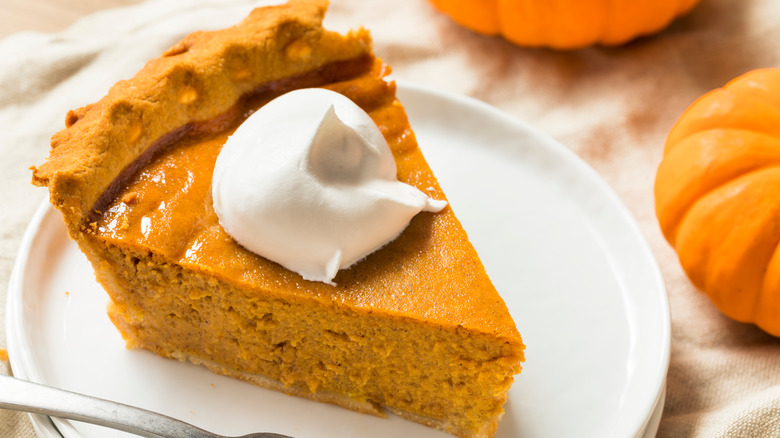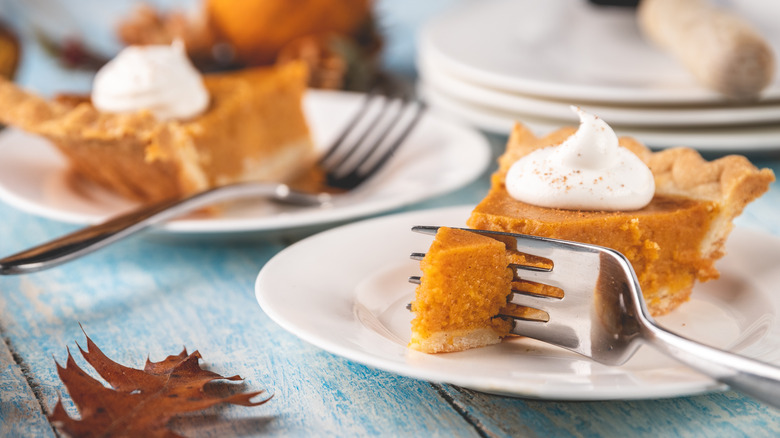This Is When Pumpkin Pie Became A Thanksgiving Tradition
Not having pumpkin pie on Thanksgiving is like eating a peanut butter and jelly sandwich sans the peanut butter. It just doesn't make sense, and it's certainly un-American. According to History, pumpkins, or "pumpions" as the first European explorers called them, date back to as early as 5,500 B.C. Fast forward to the first Thanksgiving in 1621 between the Plymouth colonists and Wampanoag Native Americans, when the autumnal colored gourds made their table debut, presumably. Albeit, pumpkins weren't considered a traditional turkey day dessert for nearly 100 more years, until 1705.
So, what happened between 1621 and 1705, and why did it take so long for pumpkin pie to become a Thanksgiving food staple? The recipe for pumpkin pie was reimagined so many times that it wasn't until the early 18th century that a standard recipe was born. In fact, Thanksgiving of 1705 led to a molasses shortage in the town of Colchester, Connecticut, which meant families would have to forgo pumpkin pie. The dessert crisis led to the community postponing their Thanksgiving feasts until all ingredients for pumpkin pie were available again. From there, things skyrocketed.
A trip down pumpkin pie recipe lane
The recipe used for pumpkin pie today is nowhere near the recipe people followed in the 18th century, let alone the recipe colonists used in the mid 1600s. Per History, one of the earliest pumpkin pie recipes to date is from 1653, which instructs "to boil the pumpkin in milk and strain it before putting it in a crust." Almost two decades later, another recipe surfaced that called for "alternating layers of pumpkin and apple, spiced rosemary, sweet marjoram and handful of thyme." Some recipes skipped the crust altogether, using a hollowed-out pumpkin as the "crust" instead. Nowadays, recipes typically rely on canned pumpkin, which wasn't invented until 1929.
If you were to bake a pumpkin pie this Thanksgiving, recipe lists generally call for a variation of the following: canned pumpkin (though you can use real pumpkin if you're up for the challenge), eggs, heavy cream, cornstarch, sweet condensed milk, cinnamon, nutmeg, and ginger (via AllRecipes and Sally's Baking Addiction). Within the last decade, people have again begun to tweak what we refer to as traditional pumpkin pie in order to fit people's dietary needs and preferences such as gluten-free, vegan, or dairy-free. Who knows what a pumpkin pie recipe will look like five, 15, 30, or 50 years from now.

